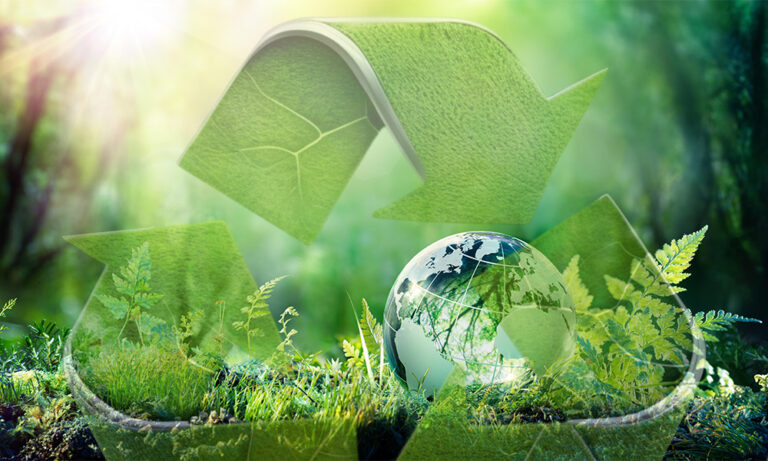In a world grappling with environmental degradation, plastic pollution stands out as one of the most urgent challenges. Traditional plastics, derived from fossil fuels, take hundreds of years to decompose and leave lasting impacts on ecosystems. As awareness grows and sustainable solutions are prioritized, bioplastics are emerging as the future of material innovation.
Bioplastics offer an eco-friendly alternative to conventional plastics, presenting hope for a cleaner, greener planet. This article explores what bioplastics are, their advantages, their environmental significance, and why they are seen as a cornerstone of future sustainability.
What Are Bioplastics?
Bioplastics are materials that are either bio-based (derived from renewable sources like corn starch, sugarcane, or cellulose) or biodegradable (capable of decomposing naturally under the right conditions). Unlike traditional plastics made from petroleum, bioplastics can often break down more quickly and have a reduced carbon footprint.
There are two main types of bioplastics:
- Bio-based plastics: Made from renewable biological resources. Some may or may not be biodegradable.
- Biodegradable plastics: Designed to break down via natural processes, regardless of the raw materials.
Common types of bioplastics include PLA (Polylactic Acid), PHA (Polyhydroxyalkanoates), and starch blends, each serving different industrial and commercial applications.
Bioplastics bring numerous environmental, economic, and societal advantages:
1. Reduced Carbon Emissions
Producing bioplastics typically results in significantly fewer greenhouse gas emissions compared to fossil-fuel-based plastics. As they are made from renewable resources, they help close the carbon cycle naturally.
2. Decreased Dependency on Fossil Fuels
The production of traditional plastics heavily relies on finite fossil resources. Bioplastics reduce this dependence, promoting the use of sustainably sourced materials.
3. Biodegradability and Compostability
Certain bioplastics can decompose under industrial composting conditions within months, unlike conventional plastics that persist for centuries. This makes them ideal for single-use products, food packaging, and agricultural applications.
4. Innovation and Versatility
Bioplastics can be engineered for a wide range of applications — from food containers and medical devices to electronics and automotive parts. Their versatility rivals that of traditional plastics, opening doors for eco-friendly innovation across industries.
5. Positive Public Perception
Companies adopting bioplastics demonstrate environmental responsibility, which resonates with increasingly eco-conscious consumers and investors. This shift can enhance brand image and marketability.
The environmental crisis posed by traditional plastics is catastrophic — choking marine life, filling landfills, and contributing to toxic waste. Bioplastics represent an essential pivot toward mitigating these effects:
- Reducing Plastic Pollution: Biodegradable options minimize the volume of persistent waste accumulating in oceans and landscapes.
- Conserving Resources: By using agricultural waste or renewable crops, bioplastics help conserve finite resources for future generations.
- Supporting Circular Economy: Bioplastics fit seamlessly into a circular economy model, where materials are reused, recycled, and returned to nature without harm.
However, it’s important to note that not all bioplastics are inherently eco-friendly; conditions for biodegradation must be correctly managed, and production practices should remain sustainable. That said, the overall shift toward bioplastics is a necessary and highly positive step.
The Role of the Industry: Future Outlook
Today, countless companies worldwide are heavily investing in bioplastic technologies, pushing research boundaries to make materials stronger, cheaper, and even more sustainable. Many brands have also committed to replacing all conventional plastic packaging with biodegradable alternatives within the next decade.
Among these innovators, the Top Bioplastic Company in India is playing a significant role in setting benchmarks for sustainable plastic manufacturing. By focusing on high-quality bio-based and compostable products, they contribute directly to reducing environmental impacts on a large scale.
Furthermore, growing government regulations, public demand, and international agreements are accelerating the adoption of eco-friendly materials across industries like packaging, agriculture, healthcare, and electronics.
In this transformation journey, another Top Bioplastic Company in India is investing in R&D, ensuring that products meet both functionality standards and environmental goals. Their dedication to sustainability acts as an inspiration for businesses globally to rethink their material choices.
Conclusion
Bioplastics are not just a trend; they are the foundation for a sustainable future. By replacing harmful traditional plastics with renewable, biodegradable alternatives, we can tackle some of the most pressing environmental challenges of our time. Governments, businesses, and consumers must collaborate to make bioplastics the norm rather than the exception.
As the world moves towards responsible consumption and production, choosing bioplastics becomes not only a smart environmental decision but also a moral imperative. Supporting innovative companies working in this field can drive real, lasting change for generations to come.
FAQs
Q1. What are bioplastics made from?
Bioplastics are made from renewable biological sources like corn starch, sugarcane, vegetable fats, and even agricultural waste.
Q2. Are all bioplastics biodegradable?
No, not all bioplastics are biodegradable. Some are simply bio-based but behave like conventional plastics unless processed in special conditions.
Q3. Why are bioplastics considered eco-friendly?
Bioplastics reduce carbon emissions, are made from renewable sources, and can decompose naturally, making them more environmentally friendly than petroleum-based plastics.
Q4. Can bioplastics replace all traditional plastics?
While bioplastics are suitable for many applications, some specialized plastic uses still require traditional materials. However, ongoing research aims to close these gaps.
Q5. What is the future of bioplastics?
The future is bright, with increasing demand, technological advancements, and government policies promoting the widespread adoption of bioplastics across industries.

